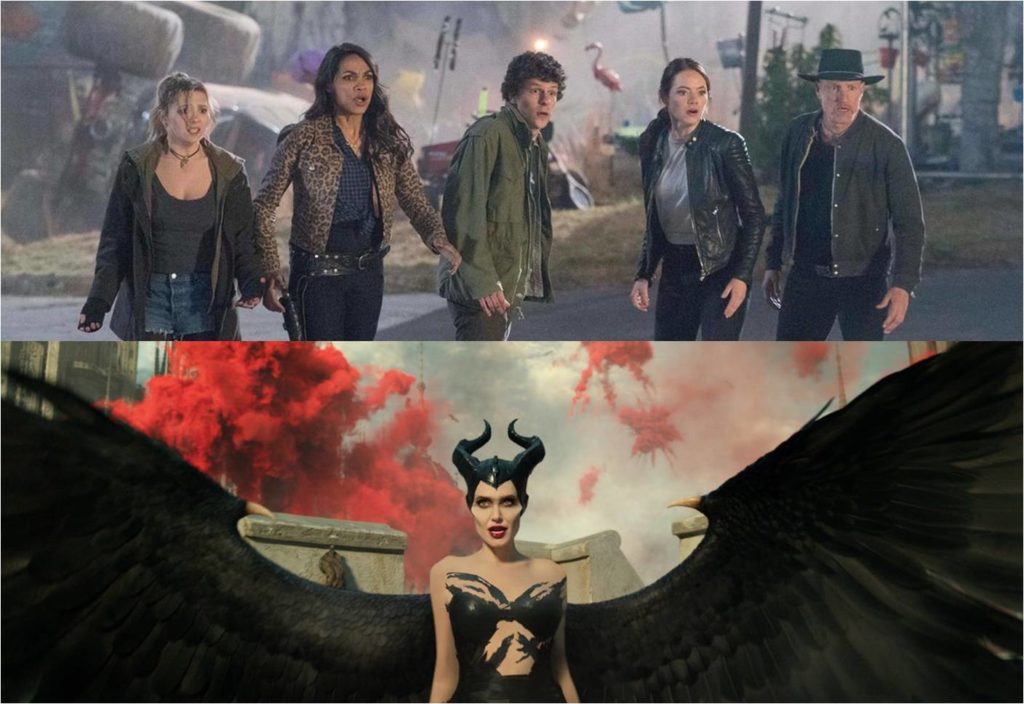
Asked to describe Claude Rains’ self-regarding police captain in Casablanca, Humphrey Bogart replies, “He’s just like any other man, only more so.” Aside from accurately summing up one half of cinema’s most beautiful friendship, that quip encapsulates what might be called The Law of the Hollywood Sequel. The motion picture industry is big business, so it’s only logical that when a movie makes money, you make another one. And because follow-ups are typically driven more by fan enthusiasm than by creative compulsion, you make the sequel just like the original, only more so: more action, more jokes, more special effects, more stars, more blood.
Last weekend saw the release of two decidedly different sequels which, if not exactly long-awaited, are certainly far-removed from their respective progenitors. Maleficent: Mistress of Evil arrives five years after Robert Stromberg’s surprise smash, which found Angelina Jolie donning pointy black horns and vivid green contact lenses for a reimagining of Disney’s Sleeping Beauty. Five years is an eon by Hollywood standards, but it’s half the interval between Zombieland: Double Tap and its predecessor, whose comic take on the apocalypse won moviegoers’ hearts and wallets a full decade ago. These unusually long gaps might suggest that both sequels are motivated by art rather than commerce—that their creators returned to their universes after significant time away because they’d actually developed exciting new stories rather than because greedy studios recognized an opportunity to cash years-old checks.
Whatever the motivation for their existence, I am disappointed (though not especially surprised) to report that neither Mistress of Evil nor Double Tap is particularly good. But their badness—or really their lack of goodness, since both films have their virtues and are too innocuous to be truly bad—is interesting in its own way, because they take different approaches to the predatory enterprise that is the sequel. One plays things rigorously by the book; the other seems to have misplaced the book entirely.
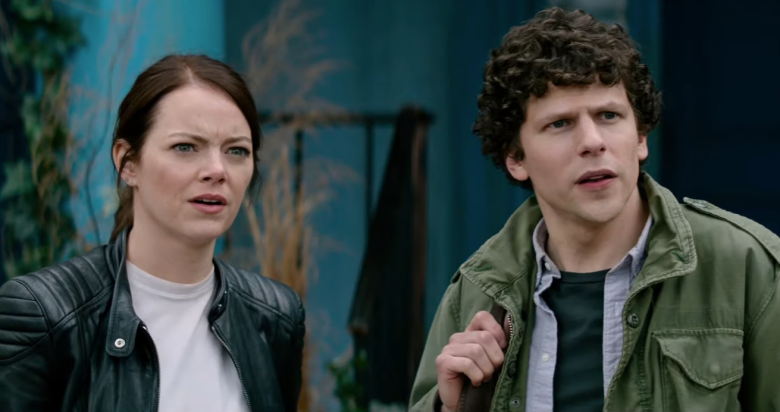
Double Tap may have experienced the longer wait time, but it proves to be the more common specimen. Directed once again by Ruben Fleischer, with a script by original writers Rhett Reese and Paul Wernick (joined this time around by Dave Callaham), it opens with its geographically named quartet—the crusty Tallahassee (Woody Harrelson), the nebbishy Columbus (Jesse Eisenberg), the smirking Wichita (Emma Stone), and the beleaguered Little Rock (Abigail Breslin)—taking refuge in the White House. Their temporary haven provides an easy metaphor for Double Tap itself, which simulates a new adventure but whose primary artistic concern is safety; it may tell new jokes and produce new characters, but its prime directive is to hunker down, to hew as closely as possible to the original film’s sardonic blueprint.
And so, Zombieland fans will get precisely what they paid for: a shaggy collage of wisecracks and insults, with periodic interruptions for bursts of undead violence that may be bloody but is in no way intense or threatening. Fleischer takes pains to repeat the tricks he deployed in 2009, meaning that what was once modestly original is now scrupulously conventional. When our heroes dispatch a reanimated corpse, text typically appears on the screen reminding viewers of the applicable rule that Columbus has devised for surviving the apocalypse (buckle up, travel light, etc.). There are cutaways to other survivors wholly disconnected from the movie proper, random ESPN-style highlight packages revealing the “Kill of the Week” (which has now been upgraded to “Kill of the Year”). A famous actor, whose surprise appearance was the apex of the first film, reprises his cameo. Tallahassee mocks Columbus’ anxiety; Columbus mocks Tallahassee’s oafishness; the women mock the men’s stupidity.
Whether this material felt fresh the first time around is debatable, but it’s undeniably tired now, despite a handful of quality zingers and some amusing performances. Double Tap half-heartedly attempts to construct a pair of emotionally weighted subplots—one centering on Columbus and Wichita’s faltering romance, the other involving Tallahassee’s fatherly instincts toward Little Rock—but it barely bothers pretending to invest them with real feeling. It’s really just another hangout comedy, an excuse to revisit some silly, funny people whom you haven’t seen in awhile.
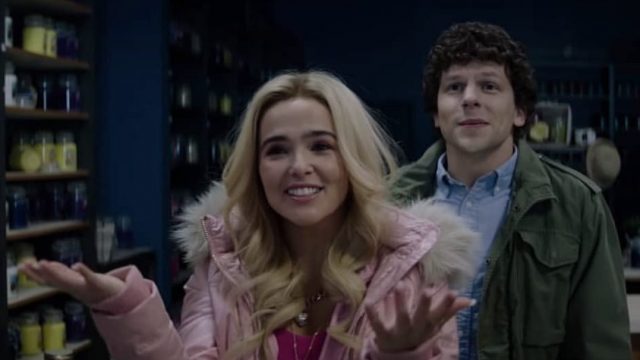
Which has its appeal. Double Tap is unpretentious in its goals and honest about its own pointlessness, and its naked commercialism is, paradoxically, a form of sincerity. After all, it asks, when you bought a ticket to a zombie-comedy sequel, just what were you expecting?
There are also a few new faces and concepts that give the film the occasional spark of energy and color. Rosario Dawson enjoys herself as a tough-as-nails motel proprietor, while Zoey Deutch pops off the screen as a caricature of shrill superficiality. The movie’s most inspired conceit is the introduction of Luke Wilson and Thomas Middleditch as a pair of doppelgangers whose tough-nerdy repartee unmistakably evokes Harrelson and Eisenberg’s own conflicting personas. Their appearance also leads to Double Tap’s most invigorating action sequence, a single-take rumble featuring multiple rooms and combatants; it’s the only time Fleischer exhibits any interest in actual filmmaking.
Otherwise, his stylistic laziness is less a signal of his own boredom than an admission of the enterprise’s cheerful insignificance. As blatantly unnecessary sequels go, Zombieland: Double Tap is a pleasant enough experience; I can hardly judge too harshly a film where Woody Harrelson imitates Elvis and grouses about driving a minivan. At the same time, the movie’s aggressive uselessness is ultimately enervating. Just because zombies eat brains doesn’t relieve zombie comedies of their duty to generate something resembling an idea.
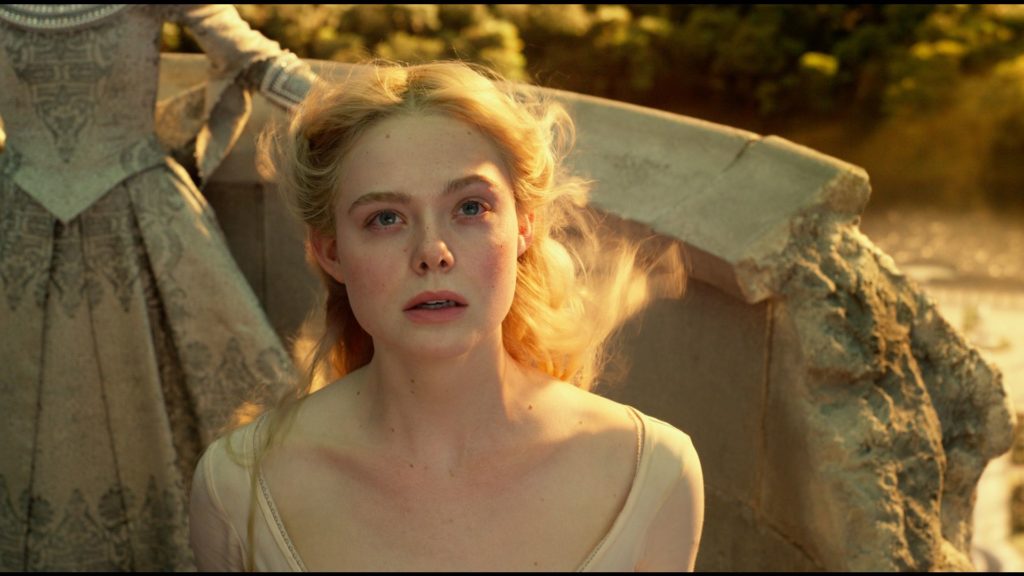
Maleficent: Mistress of Evil is a different breed of sequel—or, as its title fairy might call it, a different beastie. It isn’t a shameless rehash of its predecessor, possibly because the original Maleficent—which, for the record, I liked more than most—was itself a replication of sorts, though it twisted the Sleeping Beauty myth into its own odd meditation on feminine power and masculine insecurity. Toying with established conceptions of heroism and villainy, the first Maleficent was messy—it toggled between epic adventure story, flighty comedy, and ghoulish fantasy—but at its core, it was a surprisingly sweet study of maternal love. That throughline doesn’t readily lend itself to repetition, which may explain why Mistress of Evil opts for a bolder approach.
Boldness, however, should not be confused with logic. I’m not sure what I expected from Mistress of Evil, but I certainly wasn’t anticipating a cross between Avatar and Guess Who’s Coming to Dinner? The movie opens as a sort of star-crossed lovers tale, with Aurora (Elle Fanning), now Queen of the Moors—one of those foresty realms where animals frolic freely, unburdened by people or industry—accepting a marriage proposal from Phillip (a shaky Harris Dickinson, replacing Brenton Thwaites), a prince from the neighboring human kingdom. They’re happily in love (or so they proclaim—genuine romance is anathema to this universe), but their union is imperiled on multiple fronts; Maleficent (Jolie) disapproves of Aurora consorting with the nation that once banished her, while Phillip’s regal parents, King John (Robert Lindsay) and Queen Ingrith (an enjoyably vampy Michelle Pfeiffer), remain wary of Maleficent’s fearsome magical powers. The film’s opening act is a bit reminiscent of Meet the Parents: Fairy Godmother Edition, with Maleficent straining to make a good impression on her dubious human hosts.
That setup is bizarre, and Mistress of Evil only grows stranger and more ungainly from there. The screenplay, which was first written by original Maleficent scribe Linda Woolverton and then punched up by Micah Fitzerman-Blue and Noah Harpster, clumsily attempts to juggle a number of subplots: Aurora’s existential crisis as a child of two worlds; Maleficent’s own encounter with other members of her species, including a winged warmonger played by Ed Skrein and a more philosophical fellow portrayed by Chiwetel Ejiofor; the stealthy efforts of a slyly evil character (you can guess which one) to wipe out their enemies and consolidate power for themselves. This material can feel heavy, which may be why the movie attempts to puncture it with stabs of kid-friendly comedy, most of which are painfully unfunny; the troika of CGI fairies (played again by the wildly overqualified trio of Juno Temple, Lesley Manville, and Imelda Staunton) feels horribly out of place this time around, while Maleficent’s banter with a bird-man servant (Sam Riley) is silly and stiff. There are also a few tedious action scenes, which new director Joachim Rønning (maker of the last and least Pirates of the Caribbean flick) inexplicably shoots in clouds of darkness, obscuring his participants in foggy incoherence.
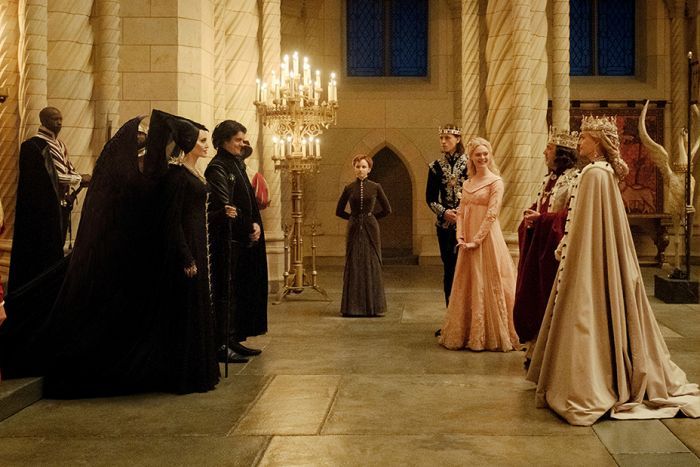
And so, in terms of its raw elements—plot, action, dialogue—Mistress of Evil is pretty lousy. And yet, the movie’s awkwardness, its difficulty to pin down, is oddly gratifying in the age of the boilerplate sequel. Here is a mass-market, thoroughly Disneyfied production that traffics directly in the concept of genocide. That’s a surprise! It also advances themes—the perpetual war between tolerance and bigotry, the idea of discovering and embracing your own identity—that are undeniably valuable, even if they’re proverbial. There is even a whiff of a disinformation campaign that may have parents teaching their children about the real meaning of fake news.
And for a brief period in its final act, Mistress of Evil sloughs off its murk and confusion and acquires some momentum as a reasonably exciting action extravaganza. Rectifying his earlier errors, Rønning sets the climax during broad daylight, filling the screen with bright colors—red smoke, green lightning—and making the inevitable clash of computer-generated creatures visible and intelligible. There’s an inspired touch in which a pipe organ, played with deranged glee by a faithful zealot (Jenn Murray), transforms into an instrument of death. And a late confrontation between Maleficent and Ingrith offers the pleasure of two lionesses of the screen unsheathing their claws.
Maleficent: Mistress of Evil is so weird, it’s a pity that it shrinks from the opportunity to be legitimately subversive, instead allowing an eleventh-hour cheat to shepherd it to cozy, familiar territory. This may have been predictable, but it still feels like a betrayal, a surrender of any semblance of creative spirit or originality. In this way—and in this way only—Mistress of Evil is similar to Zombieland: Double Tap, making certain to give its audience what it wants rather than risking a disturbance to the status quo. Maleficent may be an all-powerful fairy who can transform into a dragon, but when it comes to sequels, even she can’t overcome the ultimate Hollywood imperative: safety first.
Double Tap grade: C+
Mistress of Evil grade: C
Jeremy Beck is the editor-in-chief of MovieManifesto. He watches more movies and television than he probably should.
